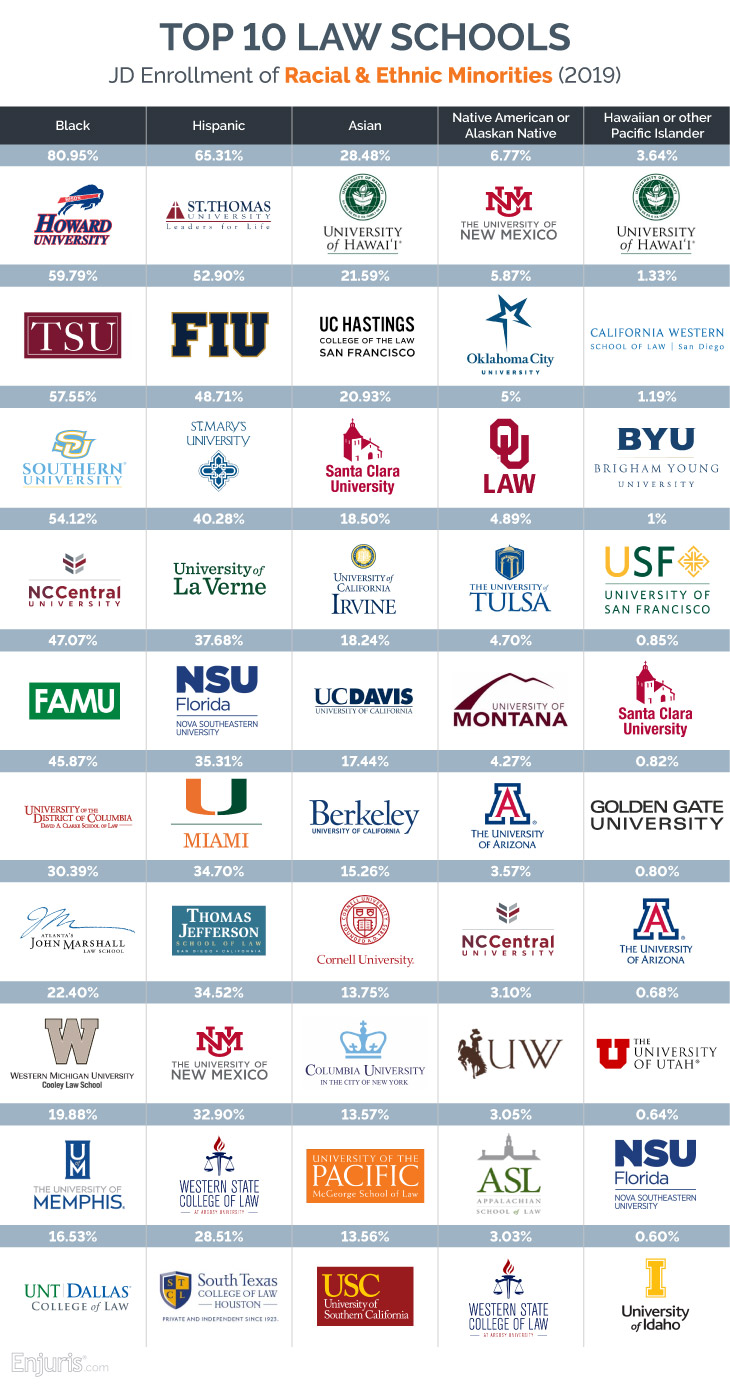According to the most recent data collected by the American Bar Association (ABA), the 2019 law school class was less racially and ethnically diverse than the 2018 class.
Most troubling, Black enrollment decreased for the 4th consecutive year.
Earlier this year, we took a look at the gender breakdown of law schools and compiled the latest Law School Rankings by Female Enrollment report. Recently, we decided to take a look at race and ethnicity demographics in ABA-accredited law schools and compiled our second annual Law School Enrollment by Race & Ethnicity report.
Here's a sampling of what we found:
Black students lag behind other races and ethnicities when it comes to law school enrollment
Though enrollment numbers are similar to the previous year (historically underrepresented students made up 31.01% of the incoming 2019 class, compared to 31.21% in 2018), the new ABA data reveals that Black enrollment decreased more than any other race or ethnicity. This underscores the fact that even among people of color, Black students are consistently underrepresented in law school classrooms.
What’s more, though the racial and ethnic makeup of law students in ABA-accredited law schools comes close to reflecting the racial and ethnic makeup of the United States population as a whole, the largest disparity between the general population and the rate of law students by race and ethnicity is law students identifying as Black.
Top 10 law school rankings based on minority enrollment
Some regions of the country seem to attract more minority law students than others.
For example, New Mexico, Florida, California, and Texas have a relatively high percentage of minority law students; whereas law programs in North Dakota, South Dakota, Maine, and Wyoming largely fail to attract minorities.
Similarly, some law schools attract more racial and ethnic minorities than others. Here are the 10 law schools with the highest percentage of students identifying with each race and ethnicity recorded by the ABA Annual Questionnaire:
Conclusions on law school enrollment among racial and ethnic minorities
In general, this ABA data indicates that Blacks (followed by Hispanics) remain consistently underrepresented in law programs around the country.
Researchers attempting to understand the lack of Black students in law school classrooms have pointed to low enrollment and high attrition rates for Black students in college and law school, as well as LSAT scores that don’t match the scores of White students and other minorities.
Researchers have also pointed to studies showing that racial, ethnic, and cultural diversity in law school classrooms leads to better questions, analysis, and solutions, which translates to more just and intelligent lawyers.
To gain more insight into racial and ethnic demographics in law schools across the US, including which law schools struggle to attract minorities and what, if any, steps those schools are taking to increase minority enrollment, read our full report on Law School Enrollment by Race & Ethnicity.
Extra credit:
ABA National Town Hall Series Webinar: Black Lawyers in America


